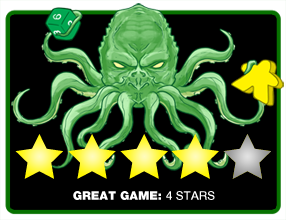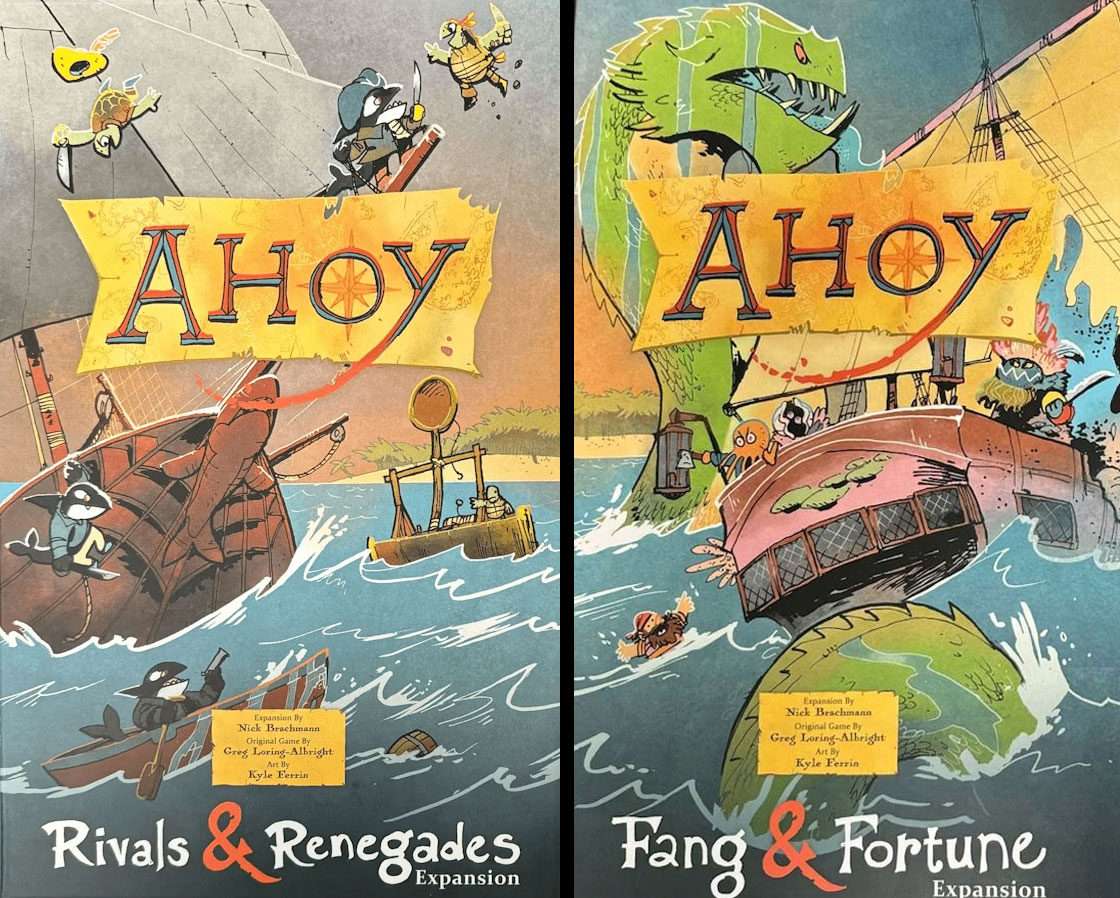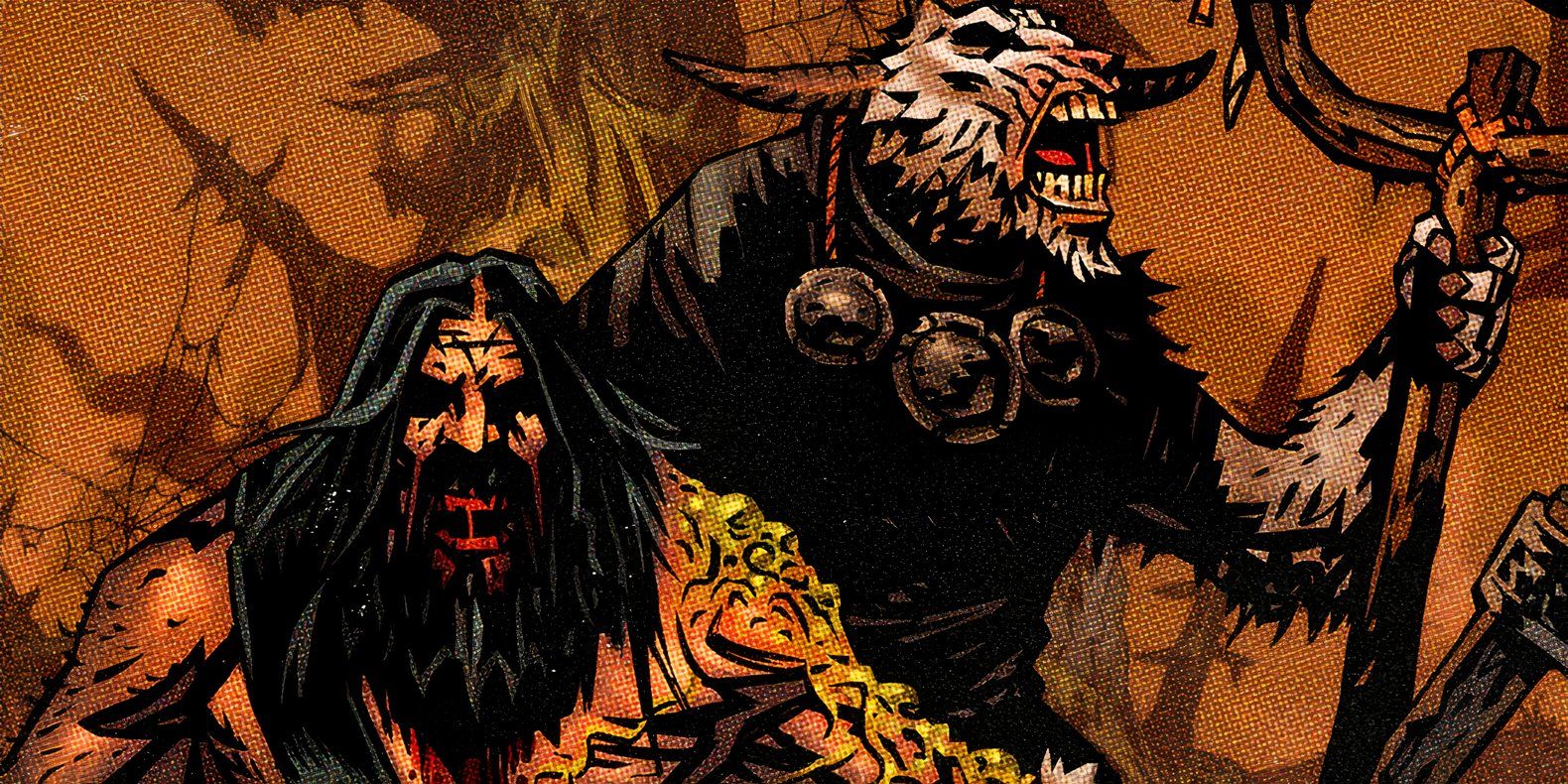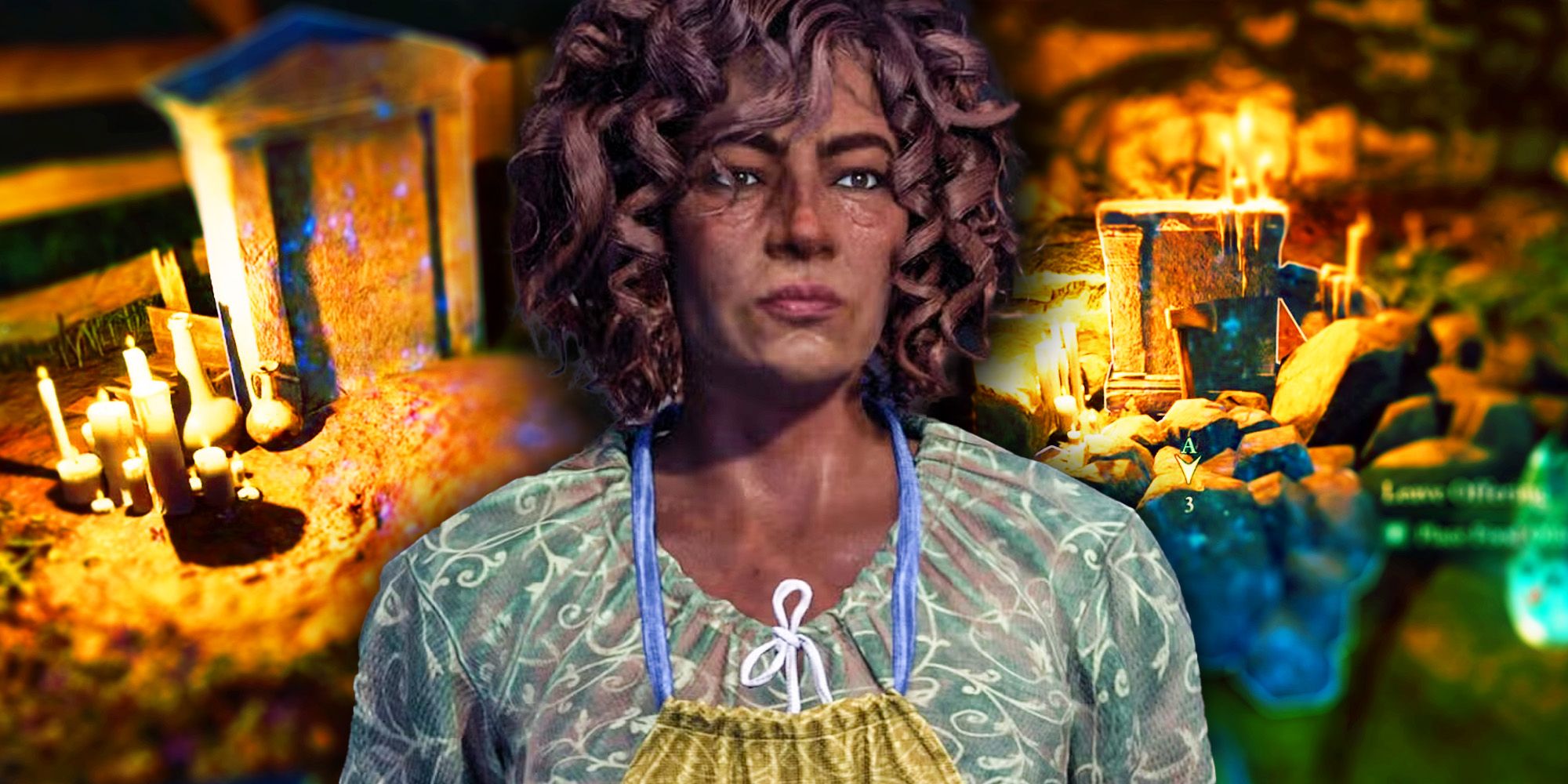PROTECT YOUR DNA WITH QUANTUM TECHNOLOGY
Orgo-Life the new way to the future Advertising by Adpathway I HAVE THE POWER!!!… to resist a miniatures game based on another classic IP from my childhood. Ok, maybe that is a lie, since I caved fairly quickly when I saw Masters of the Universe: Battleground on Gamefound last year. After much waiting, a little patience, and some trials in assembly, I was able to find out if my lack of willpower was worth it.
I HAVE THE POWER!!!… to resist a miniatures game based on another classic IP from my childhood. Ok, maybe that is a lie, since I caved fairly quickly when I saw Masters of the Universe: Battleground on Gamefound last year. After much waiting, a little patience, and some trials in assembly, I was able to find out if my lack of willpower was worth it.
Masters of the Universe: Battleground is a miniatures game from Archon Studios pitting the eponymous Masters of the Universe against the Evil Warriors and other factions from the IP. It is a game for 2 players and takes 1 to 2 hours to play.
Gameplay Overview:
The game is played over four rounds. Typically, this is not enough to eliminate an opponent’s force, though that is a victory. Instead, the goal is typically to play and complete objectives that award victory points. However, a certain margin of victory is required (20 points) in order to claim a victory instead of a draw. Though ultimately, if you do take out your opponent’s entire force, the points are like the points in Who’s Line Is It Anyway (for those for whom that reference is too dated, that means “they don’t matter”).
 Each character has a basic equipment that is iconic to that character listed on the backside of their character card. Only they may use it, and it ties into that character’s strategy.
Each character has a basic equipment that is iconic to that character listed on the backside of their character card. Only they may use it, and it ties into that character’s strategy.The goals you have to achieve towards this end are partially defined by your chosen battleground/scenario (the core game comes with a book of prebuilt options), but are also customizable. In addition to building a force of heroes/villains from Masters of the Universe, a part of your army selection before the game is your deck of fate and glory cards. Both define the actions that you’re able to take during a round (more on that in a moment), but the latter also contains side missions, which you can complete to accrue additional points.
In furtherance of these objectives, each round, both players start with a hand of five fate cards. Both players select a fate card from their hand (or one of their glory cards, which are always available till used) and simultaneously reveal them. These fate and glory cards give a number of actions and mana (the two resources used to activate abilities) and possibly additional effects when used to activate a character, but also an initiative number. Whichever player has a higher initiative on their revealed card, chooses one of their characters and activates them based upon their chosen card; then, their opponent does the same. The process is repeated until all of both players’ characters have been activated or both players choose to pass.
When activating a character, you get an amount of action points and mana listed on the chosen fate or glory card, as well as an optional additional effect which you can forgo for additional mana (on a glory card, this additional effect is a side mission that awards victory points if completed that turn, and forgoing it gives an action point instead). You can spend these resources on a number of actions, such as moving, attacking, or using special abilities listed on your character card or items. You can do actions more than once, but they have an escalating cost for doing so after the first time. Pretty basic stuff for the most part.
 Even the most powerful man in the universe has bad days against in ne’er-do-well like Mer-Man. Some abilities give debuff tokens such as Knockdown, Blind, Curse, and Cripple.
Even the most powerful man in the universe has bad days against in ne’er-do-well like Mer-Man. Some abilities give debuff tokens such as Knockdown, Blind, Curse, and Cripple.Game Experience:
As in many of these types of games, the game starts before you get to the table. A big part of the experience is building your force/army. There are a lot of options for force-building in the game, though naturally, the core set options are more limited. You start with an agreed-upon point total (typically 100 points), choose a faction (in the core set, it is just Masters of the Universe and Evil Warriors), pick characters, equip them with any remaining points, and build your fate deck (and pick glory cards). Much of that is familiar from other similar games.
The additional step of constructing your fate deck adds an extra wrinkle, as well as a bit of time. While there are premade selections to get you into the game quicker, the first few games, moving to building your own lists can be a bit daunting. That feeling of an imposing first step is a bit magnified here because the cards for characters and items do not actually have their point totals printed on them. In an effort to more easily balance in the future, the current point totals are listed online. There are benefits to this sort of system, but it is not one of which I’m particularly a fan.
 The base game comes with 10 classic characters: 5 Masters of the Universe and 5 Evil Warriors. Each character has different allocations of the various stats, and two unique abilities.
The base game comes with 10 classic characters: 5 Masters of the Universe and 5 Evil Warriors. Each character has different allocations of the various stats, and two unique abilities.Once you get to the game itself, though, it does a lot of things really well. One area that it is particularly strong is theme. The designers do seem like fans of Masters of the Universe, or have done their homework well. For example, Skeletor is a ruthless leader of the Evil Warriors. His basic equipment—an upgrade specific to each character which only they may use, in this case the Havoc Staff—grants him the ability to gain mana whenever his allies take wounds. Throwing his minions out as fodder to get attacked fuels his spells, essentially. Quite on-point.
He-Man is a durable front-line fighter, Man-at-Arms is a good defensive teammate, and so on. I have heard it critiqued that “He-Man isn’t powerful enough,” which may possibly be true, but some things have to be bent when adapting an IP to make a fair game. If it were 100% fidelity to the IP, Skeletor would run away every game, and that would not be very interesting!
As far as the mechanical part of the game, one of the core aspects that I found worked really well is the tests. Most things you try in the game are via tests. Attacking, defending, using skills, and more are often decided by rolling a test. All tests are based on one of the characters’ five stats, and all characters have different strengths and weaknesses. Orko, for example, has low Toughness and Strength, but has a very good Power stat. When rolling a test, the base number of dice you roll is whatever the applicable stat’s value is before any modification. The success or failure (and the degree of that success) of the test is based upon how many “success” results you roll, which is typically 4 or greater. If a test is opposed, your opponent gets to roll a defense, where their successes cancel out yours. The final wrinkle that keeps it interesting is exploding dice. Any result of a six allows you to roll an additional die (which itself can explode). As a result, no test is a surefire success or failure, as the exploding dice add an extra level of ambiguity.
 “You metal-munching moron! Stop hiding, and get He-Man!!!!”
“You metal-munching moron! Stop hiding, and get He-Man!!!!”I particularly enjoy that the game is not a straight-up duel-to-the-death. Too often, miniature games boil down to that, which can detract from the game in some cases. Engaging and disrupting your opponent is important, but given the round limit, you’re highly unlikely to be able to win by defeating all of your opponent’s figures. Objective points are what is important. Using your team together effectively to both work on getting as many objective points as possible while denying them to your opponent requires a certain balance. Too much offense, and you’ll lose out on the objective points (unless you do manage to wipe out the enemy force). Games can be lost by someone focusing too much on chasing a kill, which is an aspect I think more games should pursue.
There are a lot of other nuances to the game beyond these basics. Which is perhaps one of the game’s shortcomings. It has a lot packed into the rulebook for what at its core is relatively simple gameplay. Even after playing it many times, I do have questions, and am not entirely confident we came to the correct conclusions during gameplay. The game has a 20-page FAQ already posted online. There are just a lot of interactions that are not readily apparent based on the base rulebook.
 The minis are nicely detailed, and assembly isn’t too hard even for a novice (like me!). Also, if this were the show, Trapjaw would be in real trouble here.
The minis are nicely detailed, and assembly isn’t too hard even for a novice (like me!). Also, if this were the show, Trapjaw would be in real trouble here.The list-building is both a strength and a weakness of the game. There are many possibilities, even within just the core box, for how to outfit your team, and that list of possibilities only grows once you add expansions (of which, at this point, the game has quite a few). I find myself using the online list builder quite a bit in the lead-up to a game to get things just right. Which, in a way, highlights the issue. As I mentioned, the point values are not printed on the cards. While I appreciate the desire to make the points adjustable for future balancing, in order to build a list, you either must do it online using the up-to-date builder or reference the several-page PDF of the latest costs. I am not a fan of either of these options. Even if the balance isn’t perfect, I’d rather look at a card and see what it costs right on it. Online point values are something I’ve noticed more games moving towards and I am not a fan.
The rulebook was another important sticking point for us. After the first game, I remember the quote “That was fun, but I have questions.” That can largely sum up most sessions of this game. There are a few things that were not exactly clear in the rulebook. I don’t like to belabor a point on rules too much since I know they can be hard to write, and a game with so many unique abilities (due to many characters and upgrades) is bound to have unusual interactions. However, it is a little telling that things could be done a bit better if the first reaction after a game is that you have questions. But I don’t think that either of these things makes it a bad game by any means.
Final Thoughts:
As someone who has played a lot of miniature games, I found that this one did bring something different to the table. While it has some basics that you find in many miniature games, there are aspects that are distinct to this game (in my experience). Utilizing the exploding dice as a core mechanic was something I was at first skeptical of, but in practice turned out to be a very good feature. Some might find that it detracts from the “skill” of the game, as it often gets brought up in games with random factors, but I find the opposite. It makes you think about things more and have backup plans in case the unexpected happens. Also, rolling a bunch of dice is always fun.
Masters of the Universe: Battleground delivers on the theme very well. The concept of objectives, glory and fate cards, and the tests are all interesting and play well. The miniatures themselves are very detailed and look exactly as I would have hoped. Even having never played a game where I needed to actually assemble the minis myself before, I felt that it was well-worth the time assembling the 25 or so minis I currently have. The game has many expansions, which I’m planning to explore a bit in the future.
Final Score: 4 Stars – An interesting take on miniatures/skirmish games that is faithful to the source material, but has a few bumps in some areas.
 Hits:
Hits:
• Highly detailed miniatures which are easy to assemble, even for a novice
• Characters are very thematic.
• A focus on objectives prevents the games from becoming a jousting match.
• Glory and fate cards are a nice way of handling initiative
Misses:
• The point values are only available online or in a downloadable PDF.
• Certain ambiguities in the rulebook drag down what is otherwise pretty quick gameplay.





/pic8764108.jpg)
/pic8871909.jpg)













 English (US) ·
English (US) ·  French (CA) ·
French (CA) ·